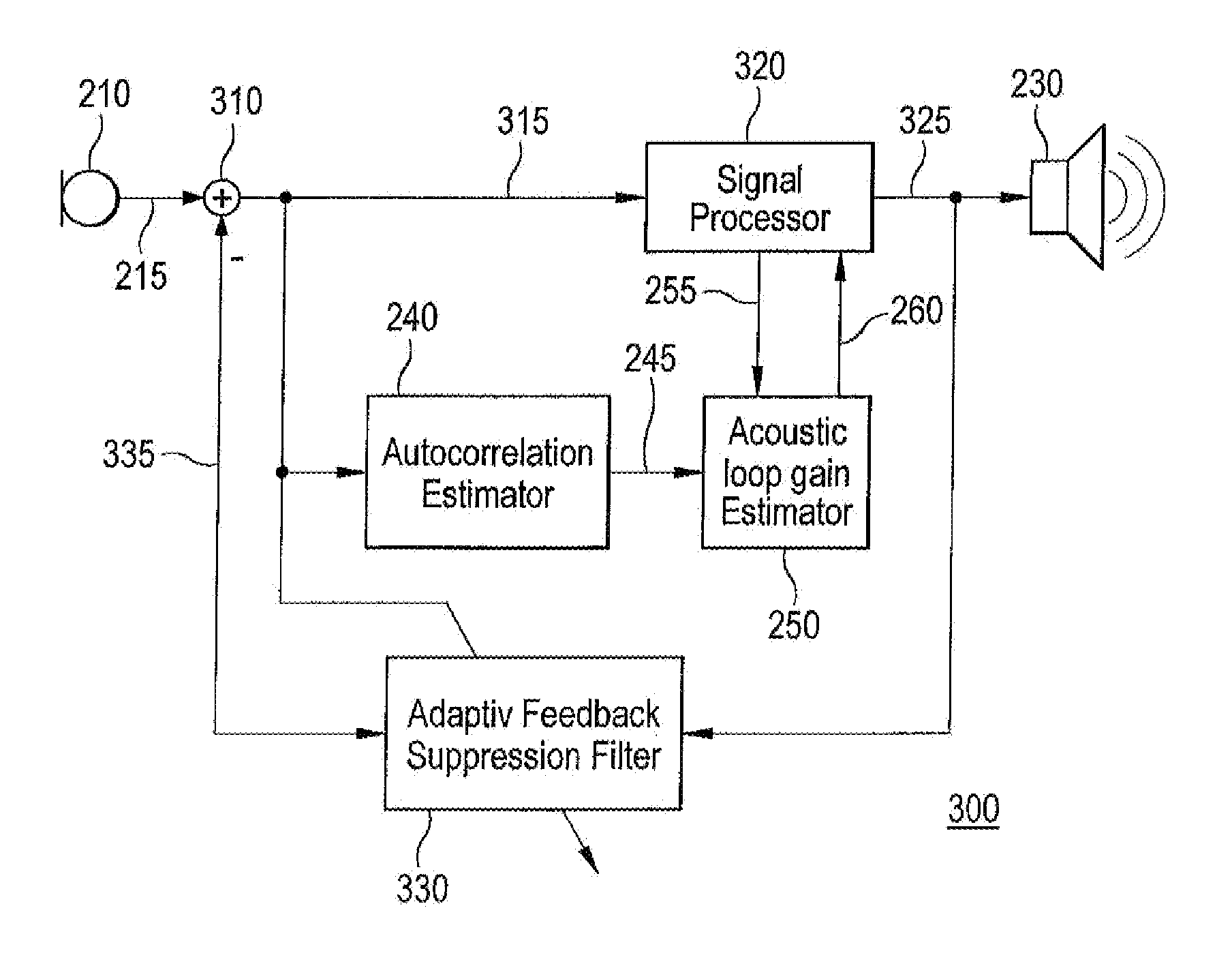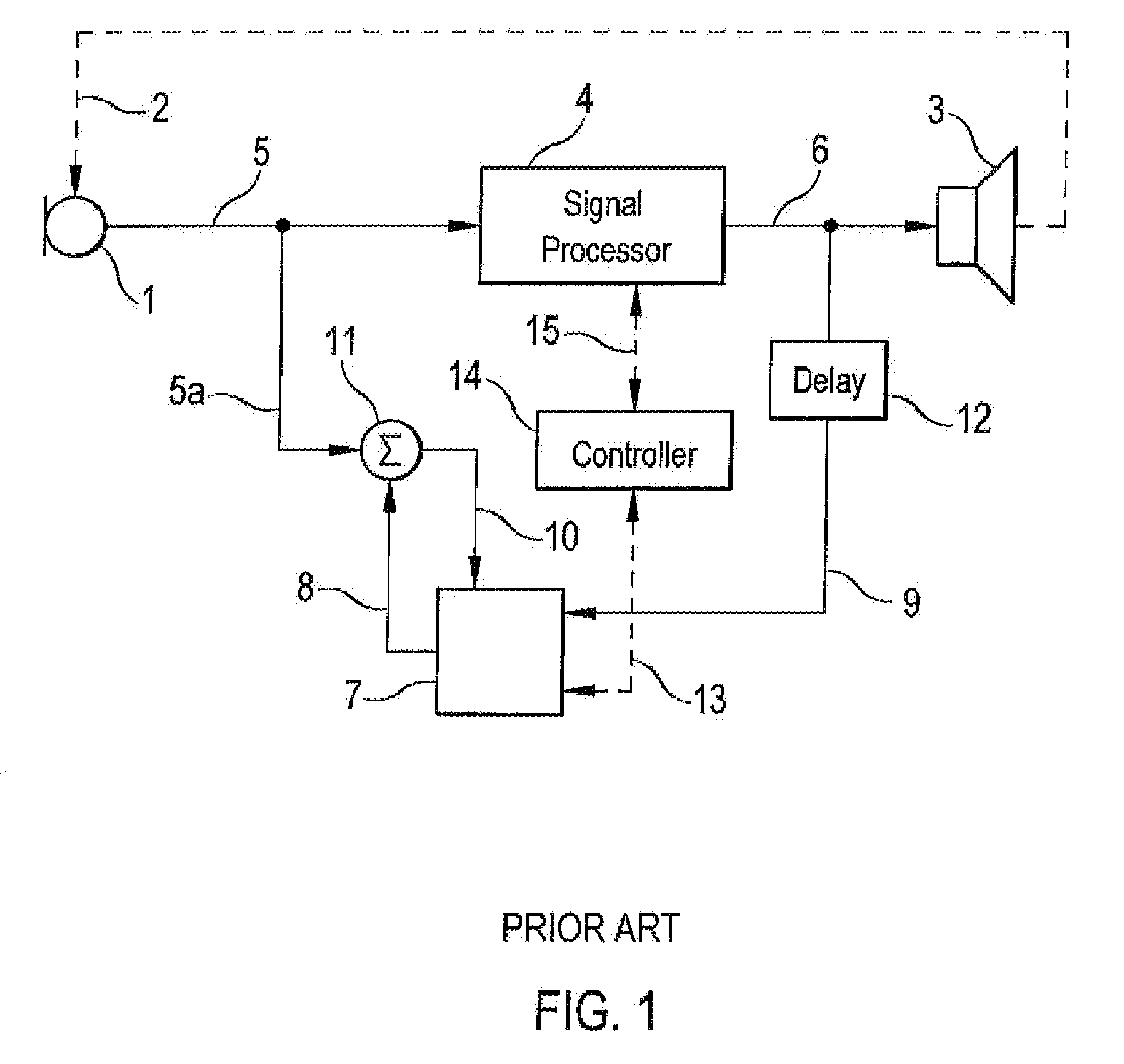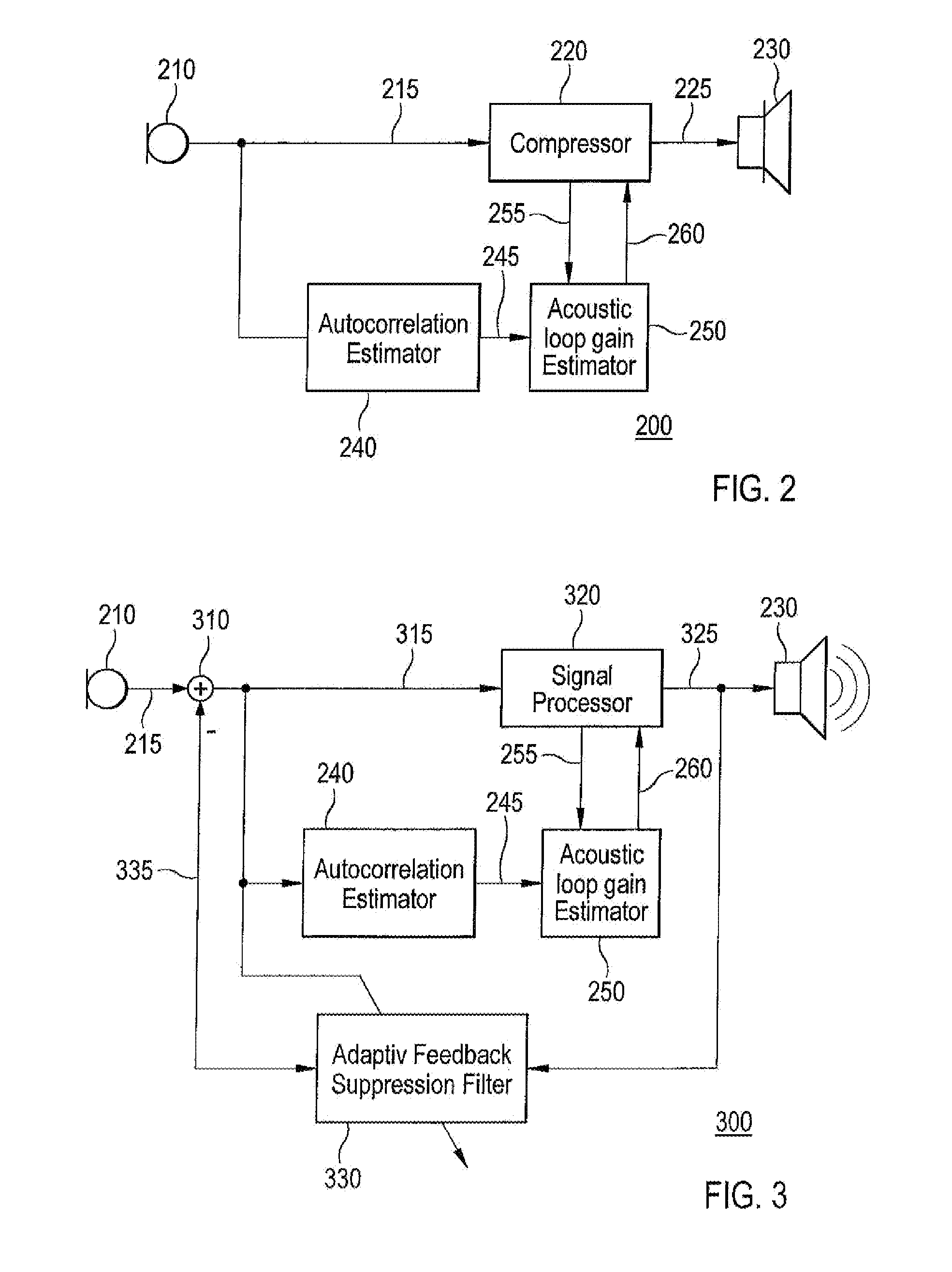Hearing aid and method of estimating dynamic gain limitation in a hearing aid
a dynamic gain limitation and hearing aid technology, applied in the field of hearing aids, can solve problems such as reducing feedback, relying on, and identifying gain limits, and achieve the effects of reducing feedback, reducing feedback, and reducing the number of hearing aids
- Summary
- Abstract
- Description
- Claims
- Application Information
AI Technical Summary
Benefits of technology
Problems solved by technology
Method used
Image
Examples
first embodiment
[0047]Reference is now made to FIG. 2, which shows a hearing aid 200 according to the present invention.
[0048]The hearing aid comprises an input transducer or microphone 210 transforming an acoustic input signal into an electrical input signal 215, and an A / D-converter (not shown) for sampling and digitizing the analogue electrical signal. The converted electrical input signal is fed into a compressor 220 generating an electrical output signal 225 by applying a compressor gain in order to produce an output signal that is hearing loss compensated to the user requirements. The compressor gain characteristic is non-linear to provide more gain at low input signal levels and less gain at high signal levels. The signal path further comprises an output transducer 230 like a loudspeaker or receiver transforming the electrical output signal into an acoustic output signal.
[0049]The hearing aid further comprises an autocorrelation estimator 240 calculating an autocorrelation estimate 245 of th...
second embodiment
[0053]FIG. 3 shows a block diagram of a hearing aid 300 of a hearing aid according to the present invention. This is a compressing hearing aid 300 wherein adaptive feedback cancellation means 330 is applied in order to eliminate, or reduce, feedback resonance, and wherein signal autocorrelation is evaluated for the feedback compensated signal. In this hearing aid, once autocorrelation at or above a critical value is detected, a gain limit at the settling value of the compressor gain is provided. The effect of feedback cancellation may be taken as an advantage enabling to increase the stability margin of the hearing aid.
[0054]The signal path of the hearing aid comprises an input transducer 210 or microphone transforming an acoustic input signal into an analogue electrical input signal, and an A / D-converter (not shown) for sampling and digitizing the analogue electrical signal into a digital, electrical input signal 215 to be further processed by the system. This signal 215 is compens...
PUM
 Login to View More
Login to View More Abstract
Description
Claims
Application Information
 Login to View More
Login to View More - R&D
- Intellectual Property
- Life Sciences
- Materials
- Tech Scout
- Unparalleled Data Quality
- Higher Quality Content
- 60% Fewer Hallucinations
Browse by: Latest US Patents, China's latest patents, Technical Efficacy Thesaurus, Application Domain, Technology Topic, Popular Technical Reports.
© 2025 PatSnap. All rights reserved.Legal|Privacy policy|Modern Slavery Act Transparency Statement|Sitemap|About US| Contact US: help@patsnap.com



